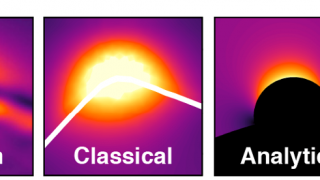
Beyond the point-dipole approximation
Condensed matter • Materials • Quantum physics • Theoretical physics
The wave nature of light expresses itself in the propagation all over space, showing an intrinsic limitation to be localized beyond the so-called diffraction limit which is of the order of half the wavelength of the photons propagating. However when interacting with matter, light often gets reflected, diffracted, scattered or absorbed depending on the interactions […]








